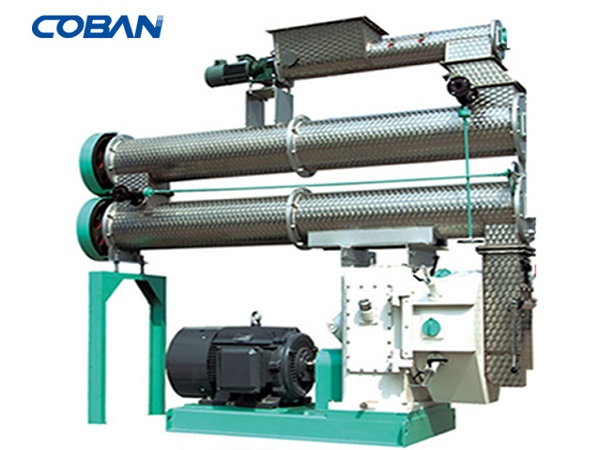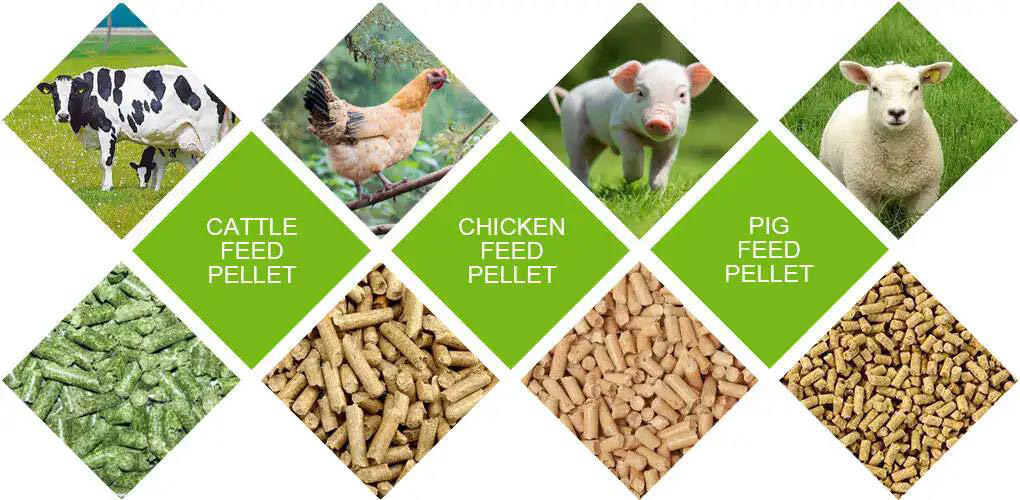cattle feed pelletizer
A cattle feed pelletizer is a type of machinery that actively converts various cattle feed ingredients—like corn stalks, grasses, and cereal by-products—into pelletized form through a process of mechanical compression.
cattle feed pelletizer Introduction
A cattle feed pelletizer is a type of machinery that actively converts various cattle feed ingredients—like corn stalks, grasses, and cereal by-products—into pelletized form through a process of mechanical compression. It is extensively utilized in the livestock industry, particularly within large-scale cattle breeding operations, to enhance feed utilization rates and streamline feeding processes.


Features of cattle feed pelletizer
Versatility in Raw Materials
It can handle a wide range of feed materials, including high-fiber and grain-based substances.
Pellet Formation
It actively shapes the feed materials into pellets of specific diameters and lengths.
Improved Nutritional Absorption
The pelletization process aids in enhancing the nutritional value of the feed and the digestibility for animals.
Waste Reduction
Pelletized feed is less prone to spillage, which minimizes feed waste.
Ease of Storage and Transportation
The compact form of pelletized feed facilitates easier long-term storage and transportation.
Automation
Modern pelletizers may come equipped with automated control systems to increase production efficiency.
Moisture Regulation
It allows for the adjustment of the moisture content of the feed materials before compaction to achieve optimal pellet quality.
Energy Efficiency
Efficiently designed pelletizers reduce energy consumption, lowering the cost of production.


The structure of cattle feed pellet machine
Feeding System
Includes a feed hopper and conveyor devices that transport raw materials into the pelletizer.
Conditioner
Used to adjust the moisture and temperature of the raw materials to make them suitable for pelletizing.
Die and Rollers
These are the core components of the pellet mill, where the die typically has multiple holes and the rollers apply pressure to extrude the raw materials through the die to form pellets.
Drive System
Includes motors, reducers, belts, etc., to provide power to the die and rollers.
Lubrication System
Ensures the lubrication of key parts such as the die and rollers to reduce wear.
Cutting Device
Used to cut the extruded ribbon-like pellets into pellets of the desired length.
Cooling System
Newly formed hot pellets need to be cooled to increase their hardness and stability.
Screening System
Used to screen pellets of different sizes to ensure uniformity in pellet size.
Dust Removal System
Collects dust produced during the pelletizing process, reducing environmental pollution and recovering reusable material.
Control System
Includes various sensors and control panels for monitoring and adjusting the entire pelletizing process.
Discharge System
Transports finished pellets to storage or packaging areas.
Frame
Supports the entire structure of the pellet mill to ensure stable operation of the machine.


Advantages of Cattle Feed Pellet Machine
Improved Feed Utilization
Compressing various feed ingredients into pellets enhances the digestibility and nutritional value, reducing waste.
Convenient Storage and Transportation
Pelletized feed is compact and heavy, facilitating long-term storage and reducing transportation costs.
Automated Operation
Many pellet mills come with automated control systems that minimize manual monitoring and increase production efficiency.
Improved Palatability
Pelletized feed is generally more acceptable to animals, helping to increase their feed intake.
Reduced Feed Loss
The pelletizing process minimizes spillage and dust during feeding, thereby reducing feed loss.
Strong Adaptability
Capable of processing a variety of raw materials, including various crop residues, hay, and cereal by-products.
Increased Production Efficiency
Batch production of pelletized feed significantly increases the efficiency of feed production, suitable for large-scale farming.
Easy to Monitor and Control
Automated control systems make the production process easier to monitor and control, ensuring product quality.
Increased Feed Stability
Pelletizing reduces the separation of feed components, ensuring consistency and stability when feeding.
Reduced Environmental Pollution
By reducing dust and spillage, pellet mills help decrease environmental pollution in farms.
Enhanced Economic Benefits
Improved feed utilization and waste reduction lead to significant economic benefits in the long run.
Easy Maintenance
Modern pellet mills are designed with maintenance in mind, making the machine easy to service and clean.
Application of chicken feed pelletizer
Typically, the production of chicken feed pelletizer uses raw materials such as corn, soybeans, wheat, and other nutrients as the formula. Our chicken feed pelletizer are specially used to produce feed for poultry, livestock, pigs, horses, cattle, sheep, chickens, ducks, goose and other animals.For different animals, with different growth cycles, (chicks, suckling pigs, calves, etc.), the feed pellet size required is different, but our feed production line only needs to replace ring molds with different apertures or use a pellet crumbler to reach the required size.

Parameter of chicken feed pelletizer
| Model | Capacity | Main Motor Power | Feeder Motor Power | Conditioner Power | Dia. of Ring Die | Pellet Size |
| SZLH250 | 1-2T/H | 22KW | 0.75kw | 1.5kw | 250mm | 2-12mm |
| SZLH320 | 3-4T/H | 37KW | 1.5kw | 2.2kw | 320mm | 2-12mm |
| SZLH350 | 5-7T/H | 55KW | 1.5kw | 3kw | 350mm | 2-12mm |
| SZLH420 | 8-12T/H | 110KW | 1.5kw | 7.5kw | 420mm | 2-12mm |
| SZLH508 | 10-18T/H | 160KW | 2.2kw | 11kw | 508mm | 2-12mm |
| SZLH558 | 15-25T/H | 180KW | 2.2kw | 11kw | 558mm | 2-12mm |
| SZLH678 | 20-30T/H | 220KW | 2.2kw | 11kw | 678mm | 2-12mm |
| SZLH768 | 25-42T/H | 280KW | 2.2kw | 11kw | 768mm | 2-12mm |







